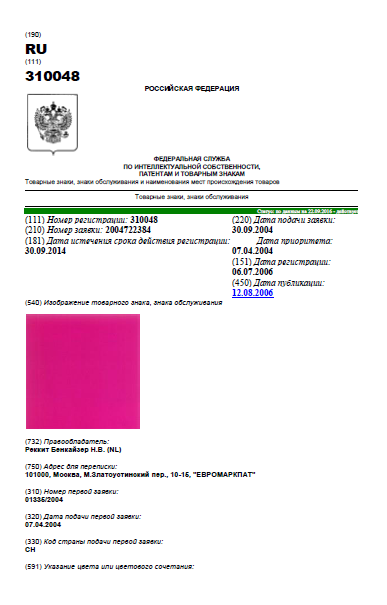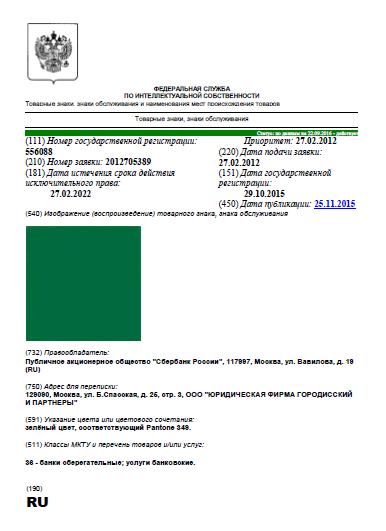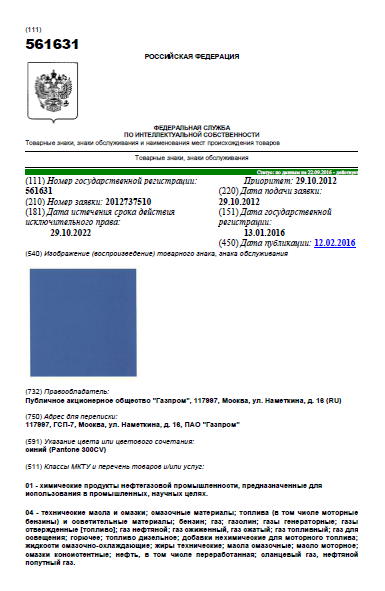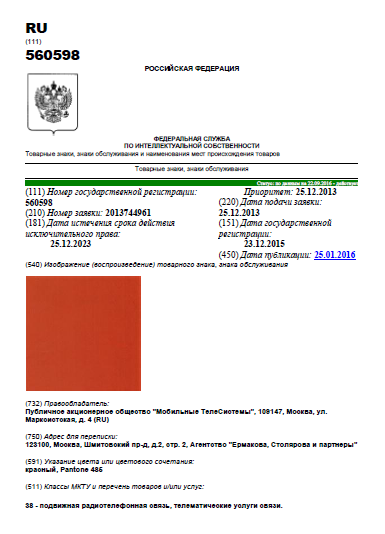The law in Russia does not restrict the types of trade marks which can be registered. However, various criteria are listed (in Art. 1483 of the Civil Code) the presence of which will make a mark unregistrable.
The general requirements for a mark to be registrable are:
According to practice in the Russian patent and trade mark office (Rospatent) the requirements for colour to be registered as a trade mark are more stringent:
Apart from the requirements above, the characteristics for the registration of traditional trade marks are also applied to applications to register colour trade marks.
Generally, in order for a colour to become a trade mark, it should be unique and widely known by the consumer.
At the moment there are very few trade marks of this kind registered in Russia. It is extremely difficult to persuade Rospatent that such marks have acquired distinctiveness.
Evidence
There is also a general problem with the provision of evidence. The usual way to establish distinctiveness is by market survey (in Russia, called a "sociological study") conducted by one of a very small number of institutes recognized as specialists in the field. Carrying out such a study for a colour mark has numerous difficulties. In particular, the colour used in the survey and the colour filed for registration obviously need to be identical, which may be easier said than done. There may be minor changes depending on the surface the colour is applied to (metal, plastic, paper, fabric etc). In such cases the applicant needs to be prepared to commission additional surveys so as to measure consumer awareness of the differing shades, albeit that the differences may be extremely minor.
In addition to a satisfactory survey the applicant will need to provide evidence of use in the usual way, covering the extent of use of the mark (geographical extent, sales volumes etc) and any advertising (how much, and for how long, with examples from printed and other media).
Examples
The green colour used by Sberbank is a good example of colour trade mark registration in Russia. They registered their green colour as a trade mark in 2015. They had many problems to overcome before the mark was registered. The first was the objection filed with Rospatent by Tsentr Invest Bank, who claimed to also use the colour green in combination with another colour in respect of banking services. Sberbank overcame this obstacle by pointing out that they are using only green and not a combination of colours. After that they had to commission a consumer survey to prove acquired distinctiveness of their mark. The results of this were positive, but nevertheless Rospatent required them to limit their application to the specific Pantone used. Eventually, the trade mark was successfully registered. This was the first colour trade mark registered in Russia for the provision of services.
There are also other examples of colour trade marks registered in Russia, such as the "hot pink" colour registered for Vanish in 2006, the red colour for MTS registered in 2015 and the blue colour registered in 2016 for Gazprom.
The rights for the colour trade marks were granted to the companies above solely with regard to very specific goods or services. It means that other companies can more easily avoid infringement by using the same/similar colours for different activities.
Conclusion
Registration of colour trade marks in Russia is not particularly complex. There is no direct prohibition for such mark registration in Russian law, but the starting point is a presumption of lack of inherent distinctiveness. This forces the applicant to put in a lot of effort to produce the evidence of acquired distinctiveness, including a market survey. All of which makes registration difficult and costly, but not impossible.
The practice of registration of colour trade marks in Russia is very much in its infancy. But the number of such trade marks is increasing.



